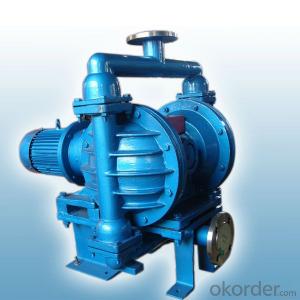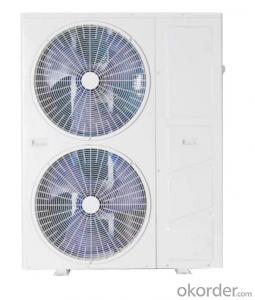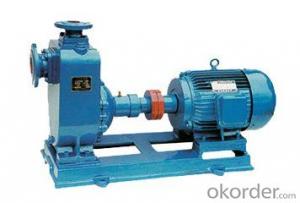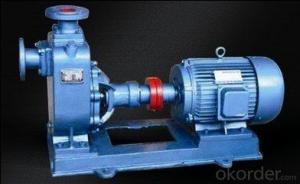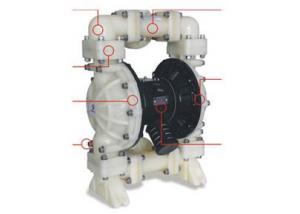ZX series self-priming pump 40ZX- 10- 40
- Loading Port:
- Shanghai
- Payment Terms:
- TT OR LC
- Min Order Qty:
- 10 unit
- Supply Capability:
- 300 unit/month
OKorder Service Pledge
OKorder Financial Service
You Might Also Like
A, product overview
This company produces the ZX series self-priming pump is the earliest according to relevant technical data at home and abroad after absorption, digestion, improve the development of pump energy saving products.Self-priming centrifugal pump, the pump and other pump does not have the self-priming capacity, etc.Such as corrosion resistant mechanical seals and stainless steel material can call some of the chemical, pharmaceutical acid and alkali medium.
Second, the product features
1, the pump with self-priming function, do not need to install the bottom valve in pipeline, only to ensure storage in pump body before work are quantitative liquid can have "a drainage, life-long self-priming" function.So both simplifies the pipeline system, and improved the working conditions.
2, has a compact structure, convenient operation, stable operation, easy maintenance, high efficiency, long service life.
Three, use the product
1) suitable for urban environmental protection, construction, fire control, chemical, pharmaceutical, dyes, and dyeing, brewing, electric power, electroplating, papermaking, oil, mining, equipment cooling, tanker unloading, etc.
(2) apply Yu Qingshui, sea water, chemical liquid medium with acid, alkalinity and with general mushy slurry (medium viscosity 100 mile, or less under the solid content of 30%).
(3) mount a rocker arm sprayer, the water can go into the air, a small drips to spray, is a good tool for farm, nursery, garden, tea garden.
And (4) can be matched with pressure filter of any model and specifications, sending size belt filter to filter the most ideal auxiliary pump.
Fourth, working conditions
Traffic: 3 ~ 500 m3 / h
Head: 10 ~ 80 m
Ambient temperature 50 ℃ or less
Medium temperature is 100 ℃ or less
Medium density of 1.24 or less by 103 kg/m3
- Q: Pneumatic tools are used to air pressure, and piston type compressors can generally provide the rated exhaust pressure between 7 kg to 8 kg, the amount of exhaust per minute of knowledge change, then this is how to calculate?
- Depending on the volume of the spray gun you use
- Q: Where is the steam pump waste, floating debris from WOW's fishing?
- Zangarmarsh paste inside turn around it without a fixed position
- Q: How does an air pump handle different air temperatures?
- An air pump handles different air temperatures by adjusting the internal components and mechanisms to accommodate the changes in temperature. This allows it to effectively compress and pump air regardless of whether it is hot or cold, ensuring consistent performance and functionality.
- Q: Can an air pump be used for inflating hot air balloons?
- No, an air pump cannot be used for inflating hot air balloons. Hot air balloons require a specialized burner system to heat the air inside the envelope, which causes it to rise and inflate.
- Q: Can an air pump be used for filling up inflatable pools?
- Yes, an air pump can be used for filling up inflatable pools. However, it may take significantly longer compared to using a water pump or a dedicated pool pump. Additionally, it's important to note that an air pump is designed for inflating objects and may not have the necessary power or capacity to fill up larger inflatable pools efficiently.
- Q: Are air pumps suitable for inflating exercise balls?
- Yes, air pumps are suitable for inflating exercise balls. Air pumps provide a convenient and efficient way to inflate exercise balls to the desired level of firmness.
- Q: Can an air pump be used for inflating air curtains for windows?
- No, an air pump is not typically used for inflating air curtains for windows. Air curtains are usually inflated using a blower or a fan that is specifically designed for this purpose.
- Q: How does an air pump prevent overheating in fish tanks?
- An air pump prevents overheating in fish tanks by improving water circulation and oxygenation. The constant flow of air bubbles created by the air pump agitates the water surface, facilitating the exchange of gases, which helps to cool down the temperature in the tank.
- Q: Can an air pump be used for inflatable water mat platforms?
- An inflatable water mat platform can indeed utilize an air pump. Generally, inflating such water mats necessitates the use of an air pump. Its purpose is to swiftly and effortlessly fill the mat with air, enabling it to float atop the water. The pump typically includes multiple nozzle attachments to accommodate various valve types on the mat. By employing an air pump, you can guarantee the proper inflation of your water mat, ensuring it is swiftly prepared for use.
- Q: Can an air pump be used for bouncy castles or inflatable toys?
- Yes, an air pump can be used for bouncy castles or inflatable toys. The purpose of an air pump is to inflate objects, and bouncy castles and inflatable toys require air to be pumped into them to provide the necessary structure and firmness.
Send your message to us
ZX series self-priming pump 40ZX- 10- 40
- Loading Port:
- Shanghai
- Payment Terms:
- TT OR LC
- Min Order Qty:
- 10 unit
- Supply Capability:
- 300 unit/month
OKorder Service Pledge
OKorder Financial Service
Similar products
Hot products
Hot Searches





